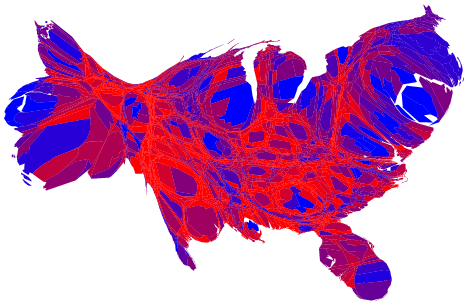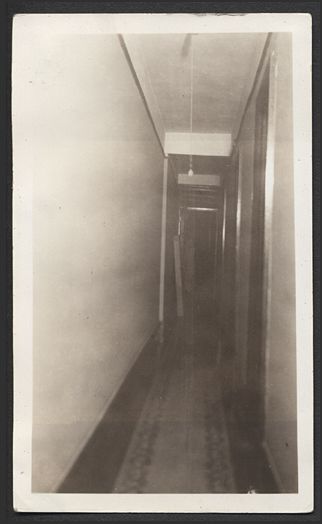Schwarz
View current page
...more recent posts
for rent JC apt - great space for an artist
"The first building that the Museum of Modern Art put up for itself, in 1939, wasn’ sumptuous, like the Met, or extravagantl sculptural, like the Guggenheim, two decade later. It was a crisp, blunt box. Philip L Goodwin and Edward Durell Stone’ International Style architecture was defiantl austere—a retort to the idea that museum should resemble grandiose palaces. The whit marble building burst out of a row of gentee brownstones on West Fifty-third Street, forcin its way into the Manhattan cityscape. It was matter of pride that the new building looke nothing like its neighbors
The museum’s idiosyncratic appearance was always a bit of a pose, however. Though the building’s original design emphasized its difference from the old architecture around it, the ultimate goal of the Modern’s curators was to make all the old stuff go away. In 1951, a new wing by Philip Johnson was built along the museum’s western edge, and in 1964 another, larger Johnson addition appeared on its eastern flank. The Modern grew again in 1984, with a new section by Cesar Pelli, who also designed a companion fifty-two-story apartment tower. And with the opening, this month, of the largest expansion yet, a four-hundred-and-twenty-five-million-dollar addition and renovation by the Japanese architect Yoshio Taniguchi, the Modern has pretty much taken over the block. The museum stretches along Fifty-third Street from just west of Fifth Avenue to just short of Sixth, and it reaches north to cover most of Fifty-fourth Street, too. You couldn’t ask for a clearer symbol of how modernism has moved from the cultural fringe to the mainstream. Not only has it been years since the art at the Modern has challenged anyone—its Matisses and Pollocks are beloved by all—but Taniguchi’s strict geometries of stone and glass feel as conventional as a Doric colonnade."
dr leslie and the composing room

trailer torrent
thanks dave
"If you're interested in buying a Neutra, Lautner or Schindler in Southern California - or any house designed by a high-profile architect, for that matter - be prepared to stand in line and to pay top dollar."
team parrino
mystery power boost ("cleaning event" credited)
tree pit guards
we have two golden rain (Koelreuteria paniculata) trees going in today
wfmu nyc record fair this weekend
whats a barking moonbat ?
On the unsurprisingly pious eulogizing of Jacques Derrida who died last month at 74.
weedpatch camp
the nyt has an interactive (read: cannot link to) election map of the us by county. its in the far right column headlined "campaign 2004" right under those two grinning shitbirds - click *graphics* - various sized red and blue circles tell an american story

"What to put where? Sherrie Levine would put seventy-five pairs of small shoes, sized for a child but styled for a man, on sale at the Three Mercer Street Store. That she had found them at a California job-lot sale hardly mattered. Artists could work through any economy, the thrift economy too. The money economy proved more difficult. Levine made a series of silhouettes taken from the penny, the quarter, and the new half-dollar coins, painting the presidents so that they faced each other flatly fluorescent on small sheets of graph paper. Happily parodying D.H. Lawrence, she called them Sons and Lovers. Douglas Crimp included them in the group show he curated at Artists Space in the fall of 1977. He called it "Pictures." "Pictures" also announced a twenty-six-second film loop by Jack Goldstein called The Jump, in which he had altered some stock footage so that one saw only a human silhouette filled with a light effect repeatedly run, jump, and dive, piking stylishly off the end of an unseen board into perfect d arkness that, like a psychedelic reflex, swallowed it whole. Crimp highlighted it in his catalogue essay. In hindsight The Jump looks like a pure description of a professional situation."
. . . a resident six year old required to know why I spent so many consecutive evenings at the bench with a film that was not my own. Because I don't understand it, I said, and he answered: 'You're not supposed to *understand* films, you're only supposed to *make* them.' It is as remedy for some such jejune superstition, I suspect, and as prophylaxis against the syndrome of manipulated, insentient valorization which it masks and sustains, that these speculations have been written during the intervening decade.' [1]
Perhaps he is being a bit hard on the boy. But were the superstition in question confined to six-year-olds (a class of individuals known, if nothing else, for their uncanny ability to revise their own blunders) there would be little need for any remedy. Unfortunately, the better part of contemporary discourse on film continues to be afflicted by the unfortunate supposition that those who make films and those who understand them are by nature distinct groups.
--Matt Teichman / Prelude to the Philosophy of Hollis Frampton
its not easy being concrete
"Architecture, being a sensory experience, must be interpreted through a sensory medium."
rip ezra stoller
a selection of images
